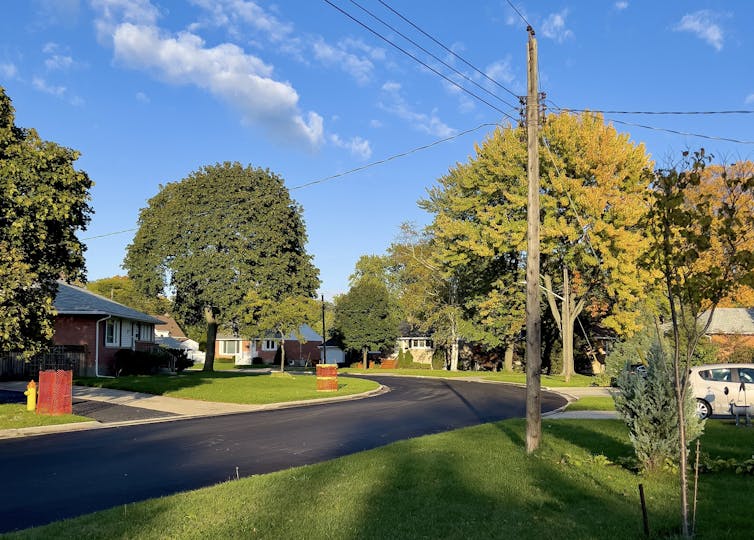News and Updates
Contact
Faculty of Social Science
Social Science Centre
Room 9438
Western University
T. 519-661-2053
F. 519-661-3868
E. social-science@uwo.ca
Discrimination can make smaller communities unappealing to immigrants, racialized and Indigenous people
June 27, 2022
The populations of smaller communities in Canada have been shrinking because of low birth rates, youth and working professionals moving away and a failure to attract and retain new residents.
In an attempt to prevent this decline, many communities are turning to marketing campaigns. For example, Sarnia-Lambton in Ontario seeks to attract new residents by highlighting the community’s affordable housing, accessible health care and strong and diversified economy — which is said to make it an ideal place to live and work.
An important factor that may undermine these efforts to attract and retain new residents, however, is high levels of racism and discrimination.
As immigration and cultural diversity researchers, we suspected that discrimination might be especially prevalent in smaller communities because residents have had less exposure to diversity and may feel uncomfortable around people from different cultures. Various media reports suggested this might be the case.
High levels of discrimination can greatly reduce the welcome-ability of smaller communities, making them hard to live in for many immigrants, racialized and Indigenous people.
Discrimination in smaller Canadian communities
Recently, we partnered with Local Immigration Partnerships in southwestern Ontario to study immigrants’, racialized and Indigenous people’s experiences with discrimination in their regions.
We conducted research in March 2021 in nine regions across southwestern Ontario — five regions included only small communities (populations of less than 100,000) and four included both mid-sized (populations between 100,000 and one million) and small communities. We asked questions about the extent of and settings in which discrimination takes place, the assumed bases of discrimination, feelings of anxiety and depression in response to discrimination, and overall sense of belonging and welcome in one’s community.

We found that in most regions, more than 80 per cent of Indigenous people reported experiencing discrimination in their community in the last three years and, in more than half of the regions, more than 60 per cent of immigrants and racialized people reported experiencing discrimination.
Experiences of discrimination were especially common in regions made up of only small communities, compared to the regions that also included mid-sized communities. These experiences of discrimination were described as occurring mainly because of race or skin colour, ethnicity or culture and for Indigenous people also their Indigenous identity.
Discrimination often happened at places of employment and in public settings. Employment discrimination happened when people were applying for jobs and also at their current places of work from supervisors, co-workers and clients. There were many public places in which discrimination occurred including stores, banks, restaurants, public transit, libraries, community centres and arenas.
Indigenous people also reported experiencing discrimination when they were looking for housing and at social gatherings. And immigrants and racialized people reported experiencing discrimination when attending school or classes.
When asked about psychological distress in response to discrimination, Indigenous people in particular reported relatively high levels of anxiety and depression.
For many immigrants and racialized people, we found that experiences of discrimination were associated with a lower sense of belonging and welcome in the community. For Indigenous people, however, the relation was less consistent.
A lower sense of belonging and not feeling welcome is likely to weaken the ability of these communities to market themselves to new residents and retain them, irrespective of their other features.
Anti-discrimination and anti-oppression strategies needed
Smaller communities across Canada have many assets they can use to sell themselves to potential residents, but these efforts will be unsuccessful if discrimination continues. The long-term impacts of discrimination include poor physical and mental well-being, lack of trust in institutions such as the police, courts and government and a low sense of belonging.
In addition to the personal consequences for those who experience discrimination, smaller communities lose out because people do not want to engage with their communities and are more likely to leave them.
Local targeted strategies are sorely needed in smaller communities to combat the virulent discrimination experienced by immigrants, racialized and Indigenous people. These strategies should address the individual perpetrators of discrimination, bystanders and organizations.
At the individual level, opportunities for co-operation between members of different groups who are working toward common goals can counter stereotypes, allowing people to understand the perspectives of others and improve attitudes. Tools and training needed to intervene safely and effectively allow bystanders who witness discrimination to take action.
At the organizational level — such as employment settings — policies and practices that prohibit discrimination and diversity training for personnel can have a large impact. It is also important to develop tools for reporting discrimination so that communities can obtain a clear picture of what type of discrimination is happening in their community and where, in order to take continuous action.
In this way, smaller Canadian communities can work toward becoming truly welcoming places and “ideal places to live and work.”![]()
Mamta Vaswani, Postdoctoral Associate, Network for Economic and Social Trends (NEST), Western University; Alina Sutter, Postdoctoral Associate, Network for Economic and Social Trends (NEST), Western University, and Victoria Esses, Director, Network for Economic and Social Trends; Co-Chair, Pathways to Prosperity Partnership, Western University
This article is republished from The Conversation under a Creative Commons license. Read the original article.

